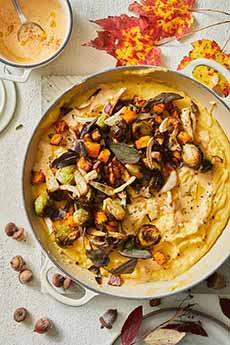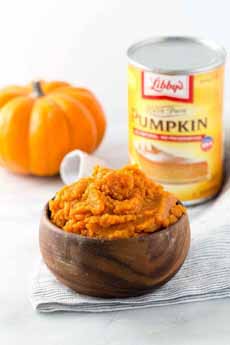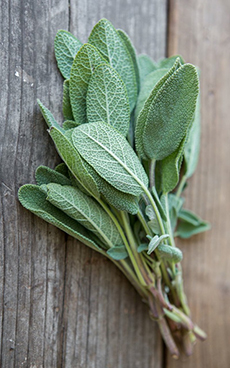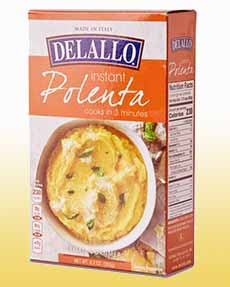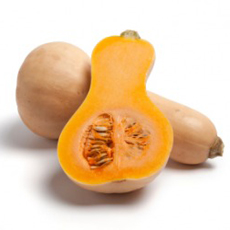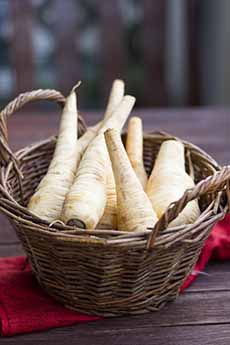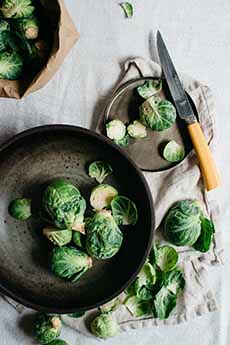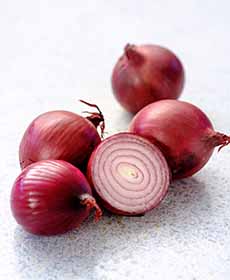RECIPE: Pumpkin Sage Polenta With Roasted Vegetables
|
If you’ve never cooked polenta, it’s a great comfort food—and gluten-free, too. We don’t know why Americans don’t eat more of it—and more parsnips, too, while we’re at it. (Parsnips [photo #2] are one of the delicious fall vegetables roasted for this recipe.) Fall and winter months beg for a dish of warm, creamy polenta. Roast your favorite fall vegetables to top this recipe—and roast extra, so you’ll have them for the next day or two. Then, set it off with a rich pumpkin cream sauce, with notes of cinnamon and nutmeg. We’ve also made and enjoyed the recipe without the cream sauce—but substituted lots of freshly grated parmesan. > There are more polenta recipes below. National Polenta Day is October 9th. > See the year’s 17 corn holidays below. > Also below, the history of polenta. Ingredients For The Polenta 1. PREHEAT the oven to 375˚F. 2. ROAST the vegetables. Toss the vegetables with olive oil in a large mixing bowl and arrange on a nonstick baking sheet. Sprinkle with sage, salt and pepper. Roast the vegetables for 25-30 minutes, or until soft and caramelized. Meanwhile… 3. MAKE the sauce. Warm the heavy cream and butter in a saucepan. Once the butter has melted, stir in 1/4 cup of the pumpkin, the parmesan, cinnamon, nutmeg, and salt. Keep warm on a low simmer until it’s time to serve. 4. COOK the polenta. In a sauce pot, bring the water, chicken stock, and butter to a boil. Slowly whisk in the polenta. Continuously stirring, cook for about 1 minute, or until the polenta begins to thicken. Remove from the heat. Stir in 1 cup of the pumpkin, the sage, and the salt. 5. SERVE. Divide the polenta into individual bowls and top with the roasted vegetables and a generous drizzle of cream sauce. Polenta as we know it today—made from cornmeal—actually has roots that predate the arrival of corn in Europe. The word “polenta” comes from Latin, meaning hulled, crushed grain (and closely related to the Latin word “pollen,” which means fine flour or powder. Ancient Romans ate a similar porridge made from various grains like barley and farro, and ground, dried legumes like chickpea flour. A quick note: The transformative moment for porridge came after Christopher Columbus’s voyages to the Americas in the late 15th century, when corn (maize) was brought back to Europe. Corn thrived in northern Italy, particularly in the Veneto and Lombardy regions, and by the 16th and 17th centuries, cornmeal polenta had become a staple food for the rural poor. It was filling, inexpensive, and could be prepared in large batches. However, there was a dark side—many people who subsisted almost entirely on corn-based polenta came developed pellagra, a disease caused by niacin deficiency. Natural corn lacks certain nutrients and while the indigenous peoples of the Americas learned to treat it with alkali, a process that wasn’t adopted in Europe‡. Over time, polenta evolved from peasant food to beloved regional specialty. In the 20th century, especially in recent decades, it’s experienced a culinary renaissance, appearing in upscale restaurants and home kitchens worldwide. Today it’s enjoyed in countless forms—creamy and soft porridge as a side or first course, grilled and crispy rectangles or cubes with a sauce, and served with everything from wild mushrooms to braised meats (information via Claude A.I.). |
|
|
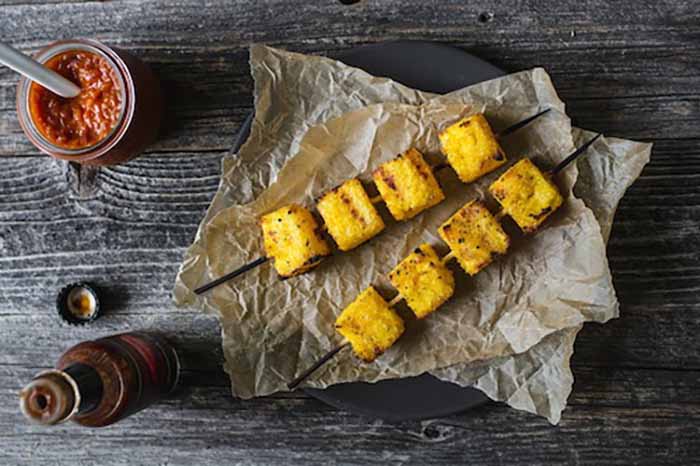 [9] Polenta fun: grilled polenta skewers with peach barbecue sauce. Here’s the recipe (photo © Edible Perspective | Ancient Harvest). ________________ *Parsnips belong to the Apiaceae family, which also includes anise, asafoetida (a spice used in Indian recipes), caraway, celery, chervil, coriander, cumin, dill, fennel and lovage, among others. Why don’t Americans eat more parsnips, a delicious vegetable? †This strange-sounding holiday commemorates the invention of the first large-scale commercial oil popcorn popper by Charles Cretors in 1885, enabling popcorn to be sold at fairs, theaters, and elsewhere to the happy public. ‡Nixtamalization, the process of soaking the corn kernels in alkaline water (lime water—calcium hydroxide), unlocks nutrients trapped in forms that our bodies can’t otherwise absorb. Of key importance is niacin (vitamin B3). The alkaline solution breaks these chemical bonds and releases the niacin into a form that can be absorbed. This is why the indigenous peoples of Mesoamerica didn’t suffer from pellagra, while Europeans eating untreated cornmeal often did. The lime water also adds calcium to the corn, and also improves the availability of certain amino acids, particularly lysine, making the corn protein more complete and nutritious. The process also changes the corn’s texture and flavor, making it easier to grind and giving it that distinctive taste found in tortillas, tamales, and other traditional Mexican foods. How did the early Mesoamericans develop this brilliant piece of food technology thousands of years ago to make their corn-based diets nutritionally sustainable. Since it happened long before written records, we can only speculate. What we do know, based on archaeological evidence, is that nixtamalization appears to have originated 1500-1200 B.C.E. The why and how is mostly educated speculation. The leading theories: Accidental discovery: The most likely scenario is that someone noticed beneficial changes when corn accidentally came into contact with lime (calcium hydroxide from wood ash or limestone). Perhaps corn was cooked near a fire pit where alkaline ash mixed with water, or stored in containers that had held lime. People would have noticed the corn became softer, easier to grind, tasted better, and kept them healthier. Other thoughts: Practical problem-solving by the farmers, such as how to remove the tough outer hull, how to make corn easier to grind, or how to improve its flavor and shelf life. The health benefits would have been a observed consequence rather than the original goal. Empirical observation over generations: While the indigenous peoples wouldn’t have understood nixtamalization in terms of niacin or amino acids, they would have noticed that communities eating treated corn were healthier, stronger, and more prosperous. This knowledge would have been preserved and passed down, even without understanding the biochemistry. Many traditional food practices—fermentation, cooking methods, food combinations—developed through trial, error, and careful observation over centuries. People noticed patterns of cause and effect long before anyone understood vitamins or chemistry. The wisdom was empirical—verified by observation or experience rather than theory or pure logic—and passed down through the generations (information via Claude A.I.). CHECK OUT WHAT’S HAPPENING ON OUR HOME PAGE, THENIBBLE.COM. |
||
